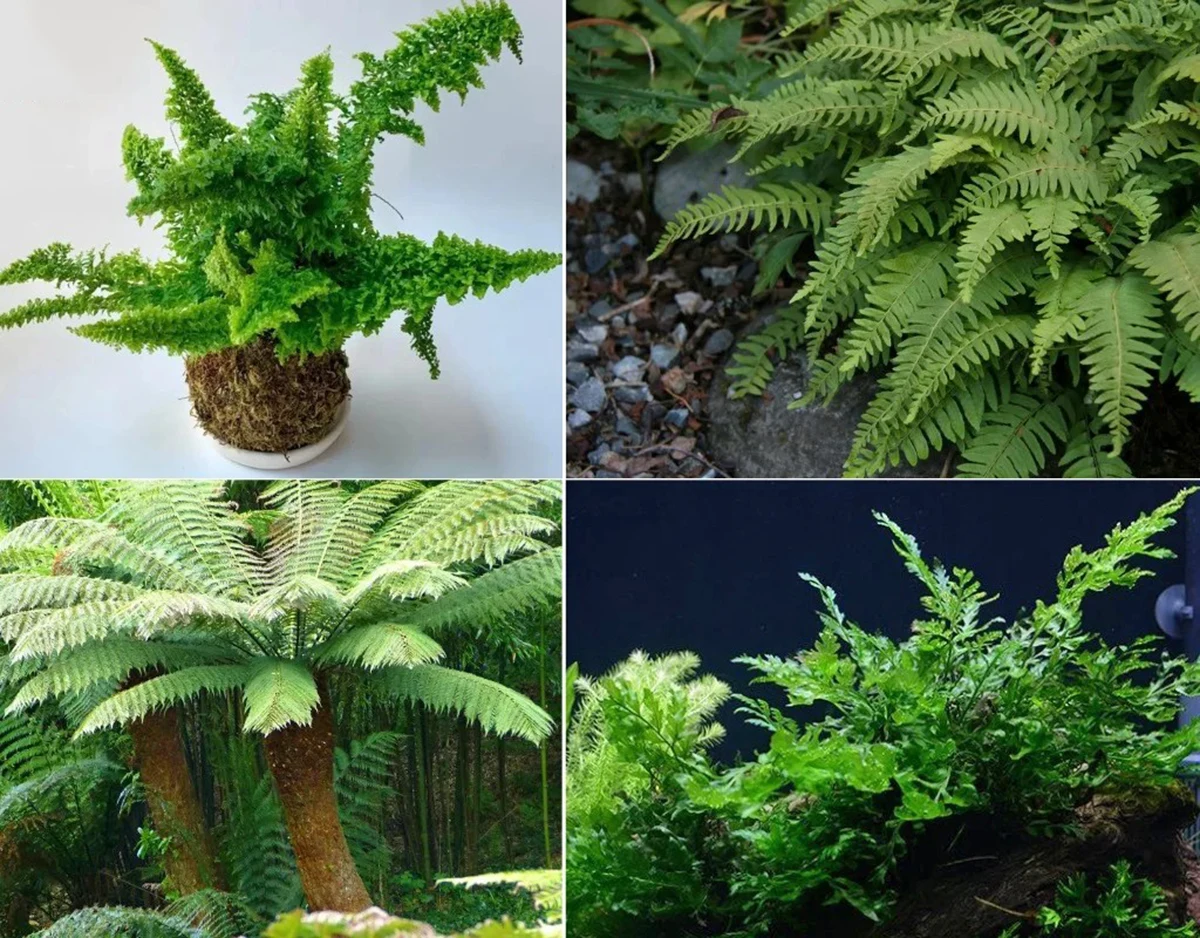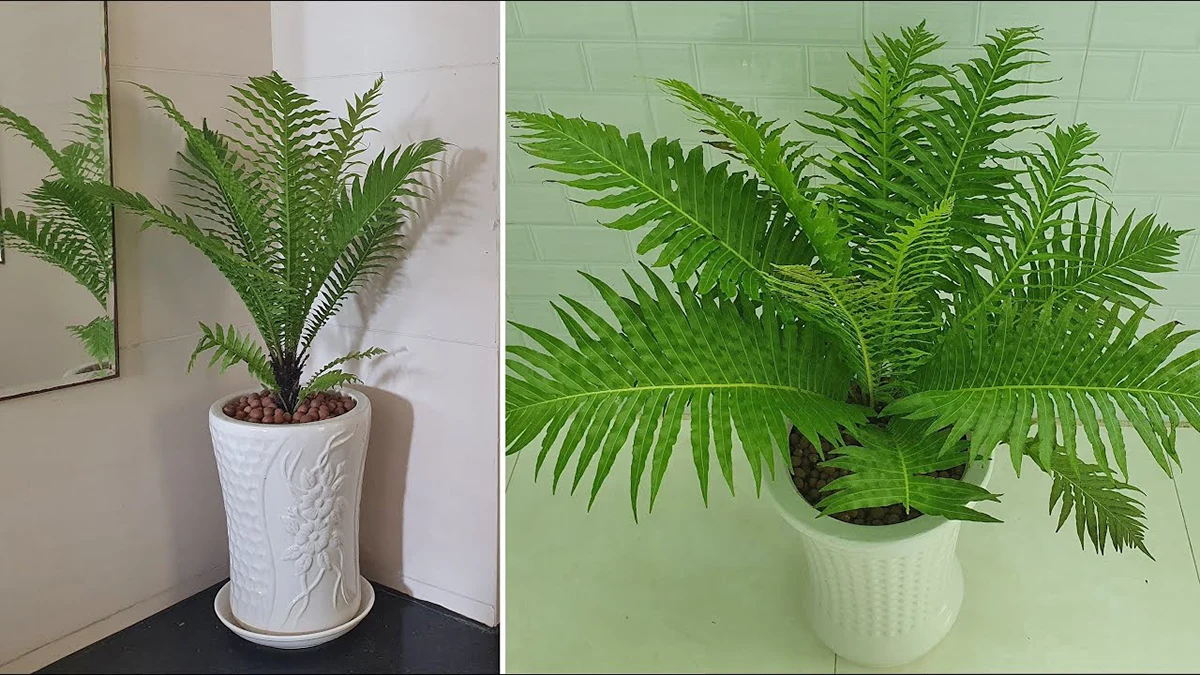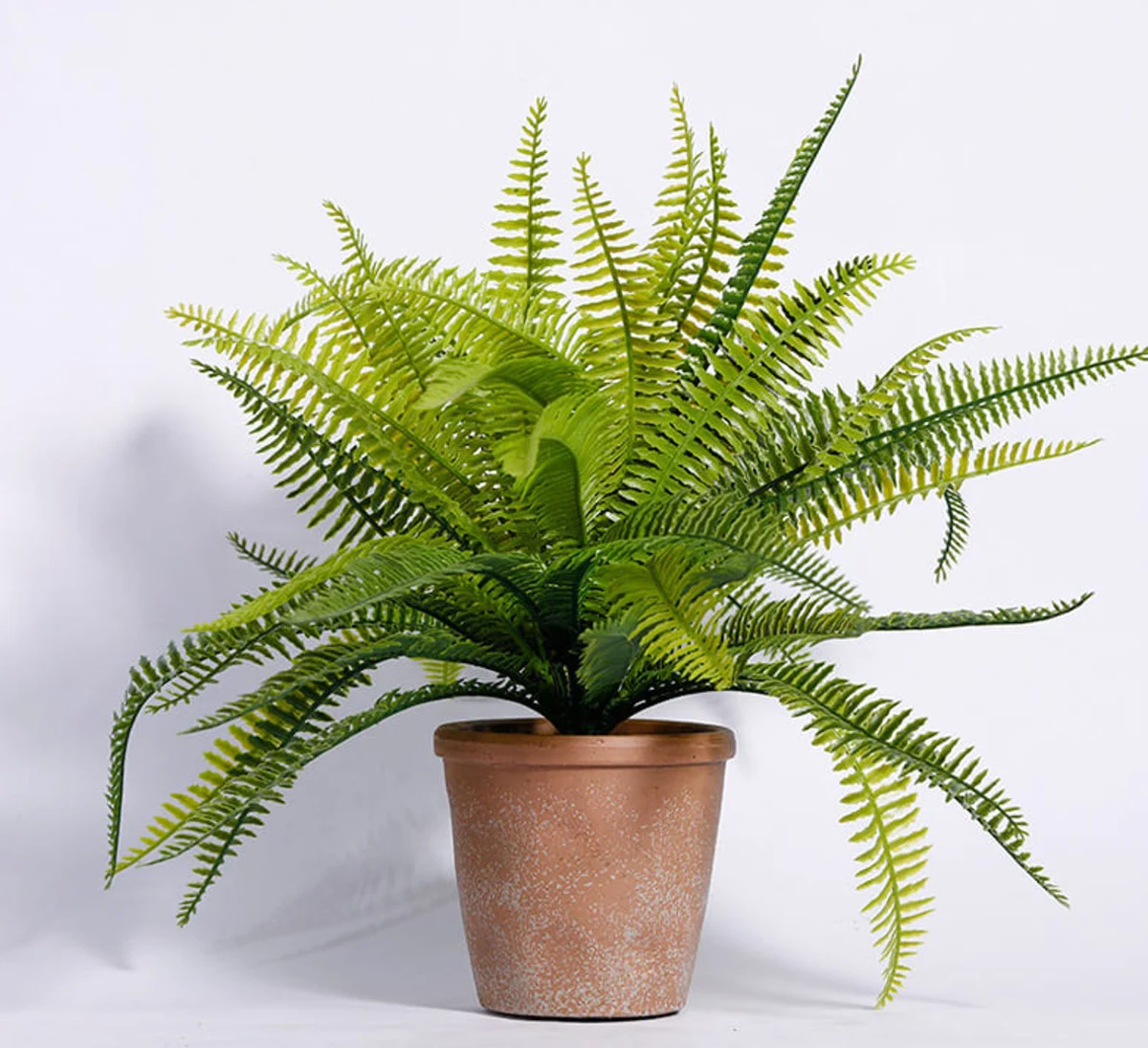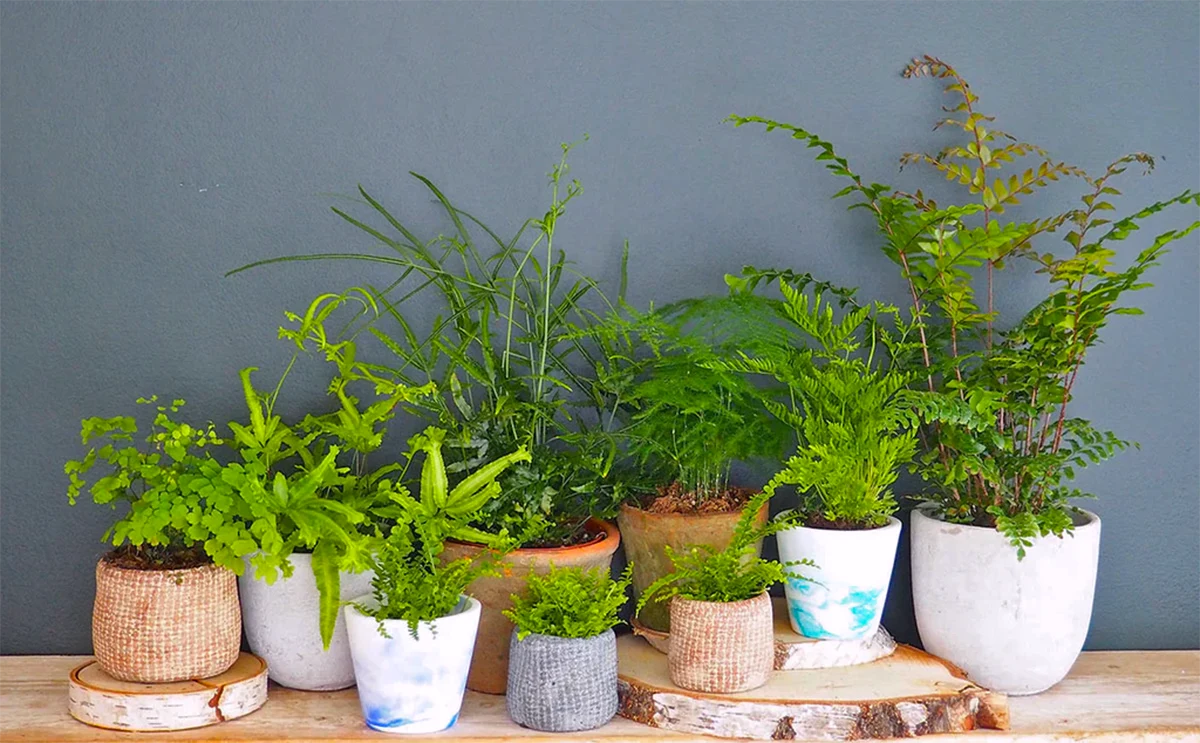Ferns bring a lush, calming touch to any space, indoors or out. From Boston ferns to bird’s nest ferns, proper care keeps them thriving. This guide from BTA Feng Shui shares practical tips and Feng Shui insights to help your ferns grow strong while adding harmony to your home or garden.
All About Ferns: Key Information
Ferns are ancient, non-flowering plants known for their delicate, lacy foliage. They thrive in shaded environments and are prized for their air-purifying qualities and calming presence. In Feng Shui, ferns align with the Wood element, promoting vitality and balance when placed strategically.
- Common Names: Boston fern, bird’s nest fern, rabbit’s foot fern, Kimberly Queen fern, button fern
- Botanical Name: Varies (e.g., Nephrolepis exaltata for Boston fern, Asplenium nidus for bird’s nest fern)
- Family: Polypodiaceae
- Plant Type: Perennial, evergreen
- Mature Size: 1–4 ft. tall, 1–3 ft. wide (varies by species)
- Sun Exposure: Bright, indirect light; partial to full shade
- Soil Type: Well-draining, rich in organic matter
- Soil pH: 5.0–6.0 (slightly acidic)
- Bloom Time: Non-flowering
- Hardiness Zones: 9–11 (USDA) for most species
- Native Area: Tropical and subtropical regions worldwide
- Toxicity: Generally non-toxic to pets, though excessive ingestion may cause mild upset
Why Grow Ferns? Benefits and Appeal
Ferns are a favorite for their versatility and low-maintenance charm. Growing ferns indoors adds a touch of nature to your home, while ferns on front porches create a welcoming, lush aesthetic.
Their ability to thrive in low light makes them ideal for shaded areas, and their Feng Shui alignment with growth and tranquility enhances positive energy flow, especially in southeast-facing spaces.
How to Care for Ferns Indoors
Indoor Fern Light Requirements
Do ferns need sunlight? Ferns prefer bright, indirect light rather than direct sun, which can burn their delicate fronds. Place them near north- or east-facing windows or use sheer curtains to filter light.
Fern lighting requirements are critical—too little light leads to sparse growth, while too much causes browning.
Tip: Rotate pots every few weeks for even light exposure. Avoid dark corners to keep ferns thriving.
How Often to Water Ferns Indoors
Watering ferns is key to their health. Keep soil consistently moist but not waterlogged, watering when the top inch feels dry. How often to water fern plants depends on humidity and pot type—check daily in dry climates. Use room-temperature water to avoid shocking roots.
Pro Tip: Place pots on a pebble tray with water (ensuring the pot base stays above the waterline) to boost humidity, mimicking ferns’ natural rainforest habitat.
Humidity and Temperature for Indoor Ferns
Ferns thrive in 40–60% humidity and temperatures between 65–75°F. Indoor fern care requires countering dry indoor air, especially in winter.
Use a humidifier, mist lightly in the morning, or group plants to enhance humidity. Avoid drafts or heating vents, which dry out fronds.
Best Soil for Indoor Ferns
Choose a well-draining, organic-rich potting mix with peat moss, compost, or leaf mold. Adding perlite or coarse sand improves drainage, preventing root rot. Best pots for ferns are shallow, as fern roots are typically shallow and spread horizontally.
Fertilizing Indoor Ferns
Feed ferns monthly during the growing season (March–September) with a diluted, nitrogen-rich fertilizer. Avoid fertilizing in winter to prevent root burn.
Read more:
- Spider Plant Care and Feng Shui Tips for a Thriving Home
- Chinese Evergreen: Ultimate Care Guide for Aglaonema
- Corn Plant Care: Ultimate Guide to Dracaena Fragrans
How to Care for Ferns Outdoors
Choosing the Right Outdoor Fern
Boston ferns are perfect for hanging ferns on porches, with their cascading fronds, while Kimberly Queen ferns suit upright pots and tolerate more sun. Macho ferns work well in part-shade gardens. Select varieties based on your climate and light conditions.
Feng Shui Note: Place ferns in southeast corners to promote prosperity and vitality, ensuring they remain healthy to maintain positive Qi.
Do Ferns Like Sun or Shade?
Fern sunlight needs vary, but most prefer partial to full shade with a few hours of morning sun or filtered light. Boston fern care outdoors requires shade, while Kimberly Queen ferns handle part sun. Direct afternoon sun can scorch fronds, so avoid southern exposures.
Watering Outdoor Ferns
How often to water ferns outside depends on weather and container type. Hanging ferns and potted ferns dry out faster, so check soil daily, keeping it moist but not soggy. Mulch garden ferns to retain moisture.
Best Practice: Water at the base to prevent fungal issues on fronds. For hanging ferns on front porches, use self-watering baskets to maintain consistent moisture.
Best Soil for Outdoor Ferns
Use loamy, well-draining soil enriched with organic matter like compost. For outdoor ferns in pots, include perlite or sand in the mix and ensure pots have drainage holes. Best soil for ferns in pots mimics their natural, moist forest floor habitat.
Overwintering Outdoor Ferns
How to care for ferns in winter depends on your climate. In zones below 9, bring ferns indoors before frost, trimming fronds and placing in a bright, humid spot. In milder climates, mulch heavily to protect roots. Boston fern care outdoors includes overwintering indoors to maintain evergreen vibrancy.
How to Grow Ferns: Planting and Propagation
Planting Ferns Indoors and Outdoors
- Indoors: Use shallow pots to accommodate fern roots, repotting every 1–2 years to prevent crowding.
- Outdoors: Plant in shaded beds or ferns in pots, spacing 1–2 ft. apart. Ensure soil drains well to avoid waterlogging.
How to Propagate Ferns
- Division: In spring, divide mature ferns, replanting sections with healthy roots.
- Spores: Collect spores from frond undersides and sow in a moist, sterile medium (a slow process).
- Rhizomes: For ferns like rabbit’s foot fern, cut and plant rhizome sections.
Troubleshooting: How to Keep Ferns Alive
- Brown Frond Tips: Increase humidity or adjust watering frequency. Trim affected tips with clean scissors.
- Yellowing Fronds: Check for overwatering or poor drainage; switch to bottom watering.
- Crispy Fronds: Move to a shadier spot and water more regularly.
- Root Rot: Ensure proper drainage and avoid overwatering. Repot in fresh, well-draining soil if needed.
- Pests: Treat aphids with insecticidal soap; remove scale with alcohol-soaked swabs.
Types of Ferns
Ferns encompass around 10,500 species worldwide, each with its own distinct shape, texture, and care needs. Yet, only a few hundred of these are commonly cultivated as ornamental plants for homes and gardens.
Some of the most popular types include:
- Boston Fern (Nephrolepis exaltata): Classic hanging fern with lush, arching fronds.
- Bird’s Nest Fern (Asplenium nidus): Glossy, upright fronds; thrives in low light.
- Kimberly Queen Fern (Nephrolepis obliterata): Sun-tolerant and ideal for pots.
- Rabbit’s Foot Fern (Davallia fejeensis): Known for its furry rhizomes.
- Button Fern (Pellaea rotundifolia): Compact, perfect for small indoor spaces.
Feng Shui and Ferns: Enhancing Energy
Ferns align with the Wood element, fostering growth, tranquility, and prosperity. Position them in southeast-facing areas to enhance positive energy flow. Avoid wilted or overgrown ferns, as they may disrupt harmonious Qi, potentially hindering opportunities. Pair with plants like peace lilies or golden pothos to amplify prosperity energies.
Seasonal Fern Care Tips
- Spring/Summer: Increase watering and fertilizing; monitor for pests.
- Fall/Winter: Reduce watering; protect outdoor ferns from cold or bring indoors.
Caring for ferns is easy when you strike the right balance of light, water, and humidity. Whether displayed indoors or adorning your porch, healthy ferns bring beauty and harmony to any space. If you found this guide helpful, give it 5 stars and share it with fellow plant lovers to spread the joy of fern gardening.

































